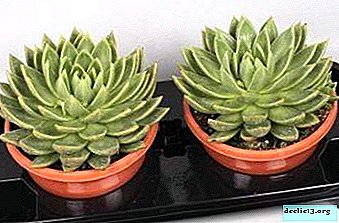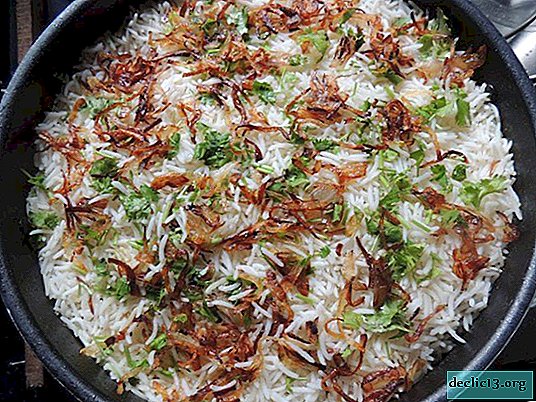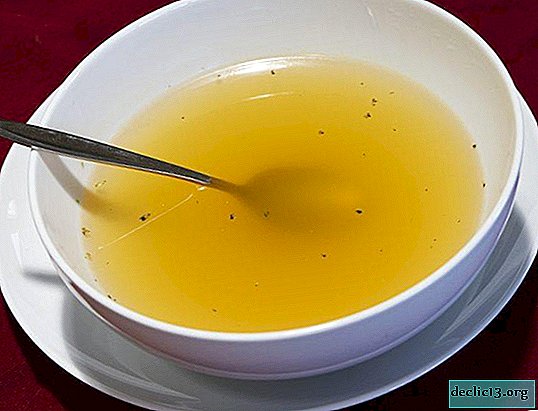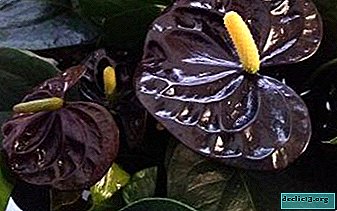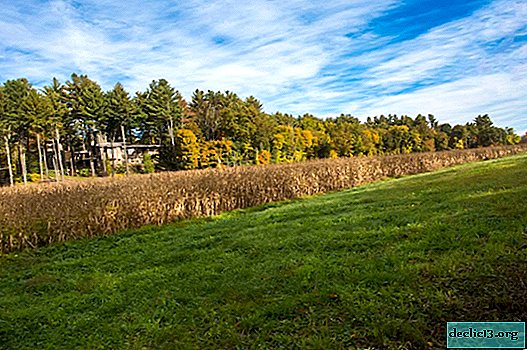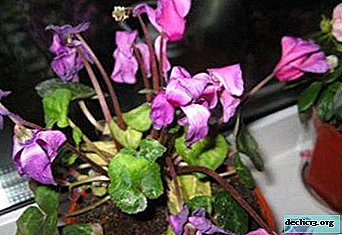Description and characteristics of the radish "18 days". Growing and Useful Variety Information

With the onset of spring, when the taste of fresh vegetables is almost forgotten, and those that are still on the shelves lose their nutritional value and frighten our wallet, our body begins to feel an acute shortage of vitamins. During this period, a juicy and appetizing vegetable comes to the rescue - radish.
This root crop contains a storehouse of useful substances, so necessary for us after long winter cold weather. This is vitamin C, a complex of B vitamins, as well as fiber, which improves digestion and improves mood, helping to get rid of spring depression. But is it so easy to grow it yourself to please yourself and your family delicious?
Detailed description and description
Consider a variety whose name speaks for itself - "Radish 18 days."
Appearance and photo
Leaf rosette of lemon green, erect, leaves obovate, medium pubescent. The petiole is saturated red-violet in color, which indicates the presence of anthocyanins in it (anthocyanins are substances that help reduce inflammatory reactions and oxidative stress in the intestine, while consuming excess fats and carbohydrates and improve intestinal barrier functions).
In shape, the root crop itself is somewhat elongated cylindrical, which is not typical for radishes of other varieties, with a diameter of 1.5 - 2 cm, a length of 6-8 cm, red with a white tip.



Sowing time
In order to get the crop in April, it is recommended to sow the seeds in open ground in late March - early April, choosing a site that first comes out from under the snow, with light, highly fertile soil.
For longer autumn and winter storage of the product, late-ripening varieties are used, and they are sown from the first of September. But during this period, to achieve the desired results, more frequent watering of the seedlings should be applied.Average weight
The average weight of one root crop is 17-20 g.
Productivity
This variety is characterized by an active yield of the crop, an average of 23 tons per 1 ha.
Growing recommendations
"Radish 18 days" - ultra-early variety, intended for cultivation on personal plots, kitchen gardens, in farms. But it is also suitable for growing in greenhouses and even at home on the windowsill (if you follow all agrotechnical rules). Before sowing, fertilizers are applied to the soil, abundantly watered, the seeds are calibrated. Pre-seed can be soaked, then the seedlings will not take long.
Resistance to diseases and pests
 The variety is characterized by high taste, relative resistance to cracking, climate change - lowering or increasing temperature.
The variety is characterized by high taste, relative resistance to cracking, climate change - lowering or increasing temperature.
Shoots can withstand frosts up to -2 ° C. It should be noted that radishes of this variety have stable immunity. For this vegetable, the duration of daylight does not matter, therefore, it is not susceptible to flowering and other diseases.
Ripening period
The period from germination to technical maturity and subsequent harvest is from 16 to 22 days. In a closed ground, respectively, the radish ripens earlier, and in the open - a few days later. Due to the early maturity of this culture, gardeners can grow several crops per season, provided that they are sown every 2 weeks.
Soil preference
Culture prefers light, highly fertile soil, light loamy or sandy loam. Also, a rich harvest requires an unshaded, well-blown area or an open, lighted balcony that overlooks the sunny side. Of course, in a city apartment it is difficult to grow a large number of fruits, but for one family it is quite enough. The richer the trace element is the soil, the larger the fruit and the juicier its pulp.
With a lack of moisture, the taste becomes sharper, and the flesh is somewhat dry. Therefore, it is very important to provide plants with abundant and regular watering, especially in hot weather.
Acidified and poor soils are not suitable for the cultivation of this root crop; in such a soil, the process will not produce the desired crop, so the soil should be fertilized and dug up.Crop keeping
The vegetable has a beautiful presentation, is well transported and stored. If you have the opportunity to store the crop in the cellar at a temperature of about 5 ° C, then the root crop can maintain its taste and nutritional properties for 2-3 months.
Breeding History
 You all remember the fairy tale "Turnip", which parents read to us in childhood. It is from the turnip, or rather, the radish that leads its history to radishes, it has been grown for about 5 thousand years, but in European countries they learned about it only from the mid 16th century. In the 19th century, Russian breeders bred many new varieties of radishes, including early ripening.
You all remember the fairy tale "Turnip", which parents read to us in childhood. It is from the turnip, or rather, the radish that leads its history to radishes, it has been grown for about 5 thousand years, but in European countries they learned about it only from the mid 16th century. In the 19th century, Russian breeders bred many new varieties of radishes, including early ripening.
Quick-ripening radish has become one of the few plants grown in zero gravityat the International Space Station. It is particularly popular on earth.
Difference from other species
From other types of "Radish 18 days" differs in several ways:
- complete lack of arrows;
- active seedlings;
- ripening in the shortest possible time;
- the first fruits can be eaten as early as 16 days after germination.
Experienced gardeners claim that this variety is suitable for growing not only in open ground, but also in the greenhouse and on the windowsill. Some lovers of radish sow it in the open ground even for the winter, under the snow, and then their first crop appears in February - March (depending on climatic conditions).
Advantages and disadvantages
The special value of “Radish 18 days” is that it can be easily grown both on a personal plot and on the balcony of a city apartment. Varieties have practically no drawbacks, with the exception of requirements for fertile soil and plentiful watering.
Application
This tasty and healthy root crop is used as a part of salads and various fresh vegetable dishes. Radish tops are a useful top dressing for poultry.
Growing
 To prepare the beds for planting, loosen the soil to a depth of 20-30 cm and slightly level it from above. For 1 square meter it is enough to make a bucket of a mixture of sand and humus, add 1-2 tablespoons of superphosphate. Experienced agronomists do not recommend getting carried away with nitrogen fertilizers, such as manure. Nitrogen contributes to the formation of voids in the pulp of the root crop. If the plant nevertheless develops slowly, it should be fed; for this, fertilizers such as Kristallin, Ammophos, and urea are suitable.
To prepare the beds for planting, loosen the soil to a depth of 20-30 cm and slightly level it from above. For 1 square meter it is enough to make a bucket of a mixture of sand and humus, add 1-2 tablespoons of superphosphate. Experienced agronomists do not recommend getting carried away with nitrogen fertilizers, such as manure. Nitrogen contributes to the formation of voids in the pulp of the root crop. If the plant nevertheless develops slowly, it should be fed; for this, fertilizers such as Kristallin, Ammophos, and urea are suitable.
The optimal daylight hours for radishes of this variety should be 10-12 hours. There is no need to fill seedlings, if, of course, they decided to grow radishes on the windowsill for the New Year's table. The plant should receive a sufficient amount of light, at least 8 hours, otherwise, instead of succulent root crops, lush tops will grow.
Harvesting and storage
Harvested as the fruits ripen, gently pulling them out of the garden, trying not to damage the unripened plants. The collection is carried out no earlier than 16 days from the appearance of seedlings. For convenience, when harvesting, and so as not to worry that they did not have time to thin out the seedlings, seeds should be sown with an interval of 2-3 cm.
You can use egg trays by first cutting the bottom of each cell:
- Put the tray on the bed and throw one grain in each cell.
- Then remove the tray, and sprinkle the crops with a small layer of soil.
The same method can be used for sowing beetroot and carrots.
Diseases and Pests
If the terms for growing radishes fall in the summer months, there is a risk of plant damage by such pests as:
- cruciferous flea;
- cabbage fly;
- wireworm;
- slugs.
 Insects attack mainly on tops. Marigolds, Chernobrivtsi are good helpers in pest control. During flowering, they scare away insect pests with their aroma.
Insects attack mainly on tops. Marigolds, Chernobrivtsi are good helpers in pest control. During flowering, they scare away insect pests with their aroma.
Any vegetable crops other than the cruciferous or cabbage family can be the predecessors of radishes in the garden. It is not recommended to sow it after radish, cabbage, mustard, daikon, radish, as they are susceptible to the same diseases. A good predecessor is:
- potatoes;
- cucumber;
- Tomatoes
Compliance with crop rotation rules always gives a good result, you should not forget about it.
Similar varieties
There are many different varieties of radishes, and it is not surprising that many of them are similar:
- Ripening speed varieties “Firstborn F1”, “Detsky F1”, “Presto”, “Ultraearly” close to “Radish 18 days”.
- In appearance “French breakfast”, “Sweet tooth”, “Grandchildren’s joy”.
After reviewing the variety of ultra-early radishes, we can conclude that for those who are looking for an unpretentious variety of this tasty and healthy vegetable - "Radish 18 days" is really the best choice, because any novice gardener and even a child can grow it.
Useful video
We offer you to watch a video about the radish variety 18 days:


